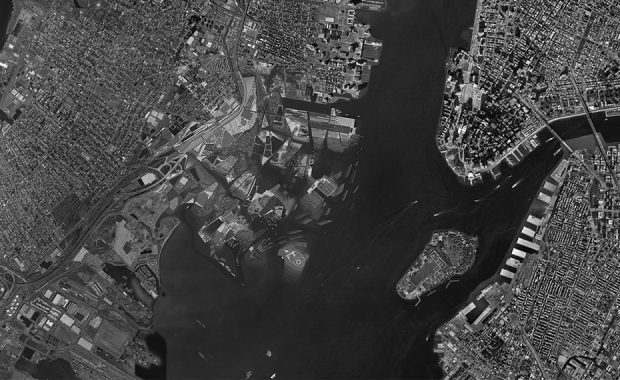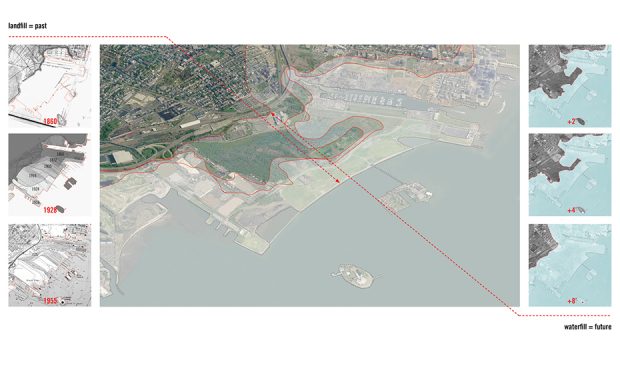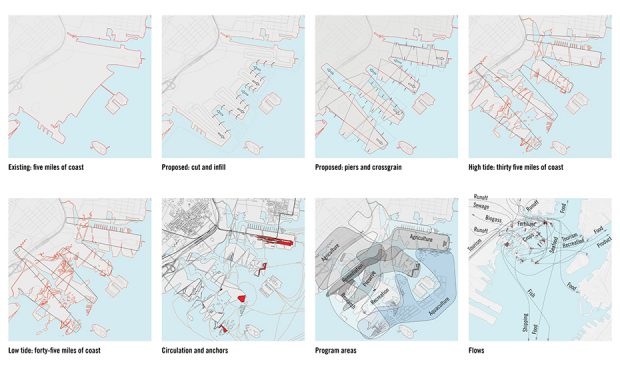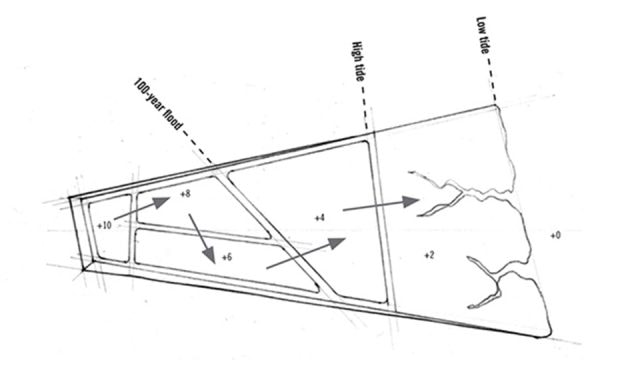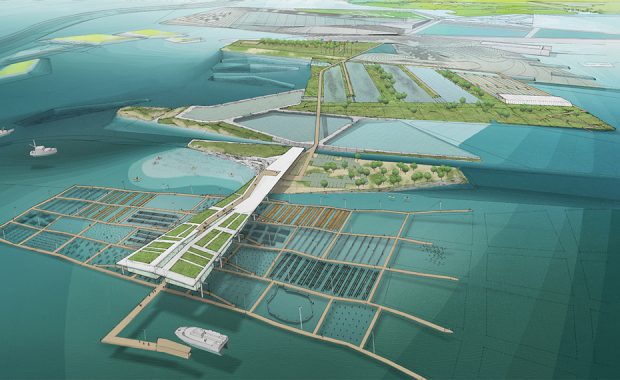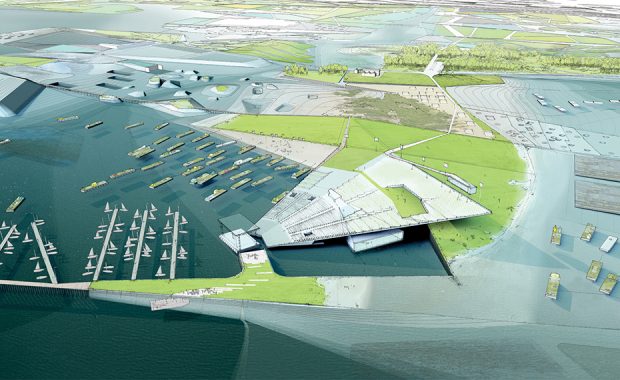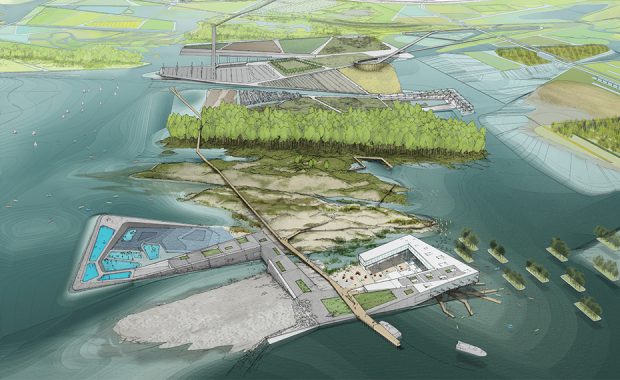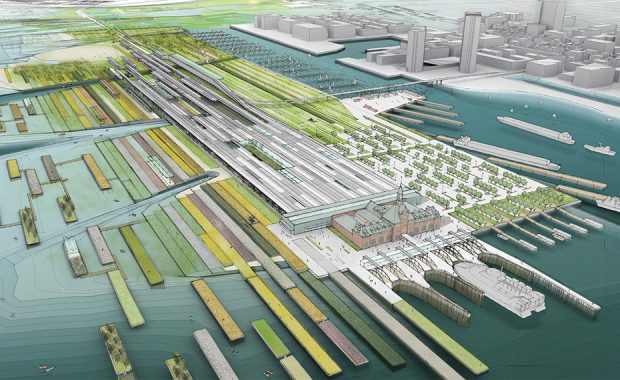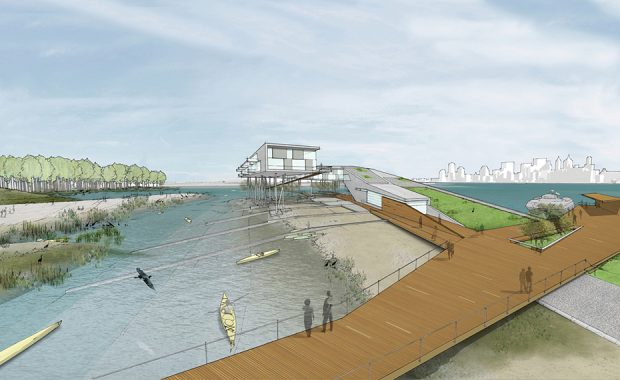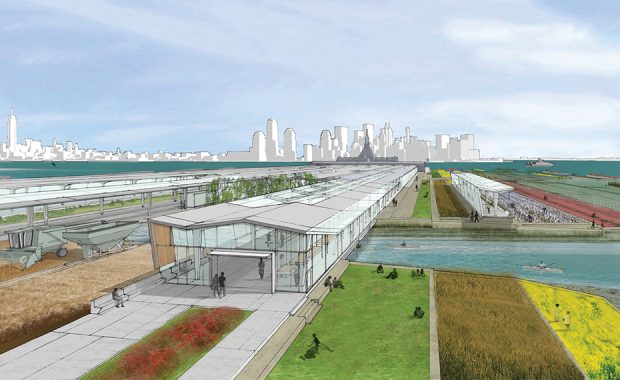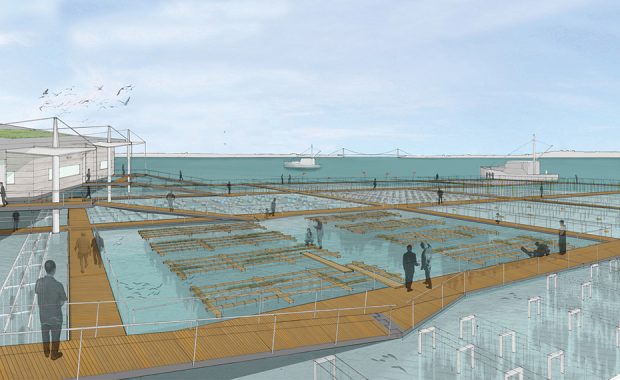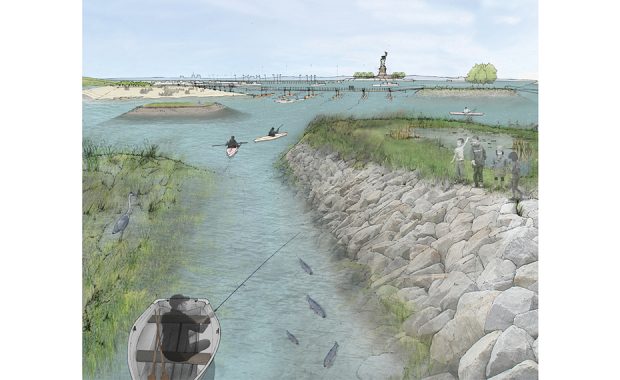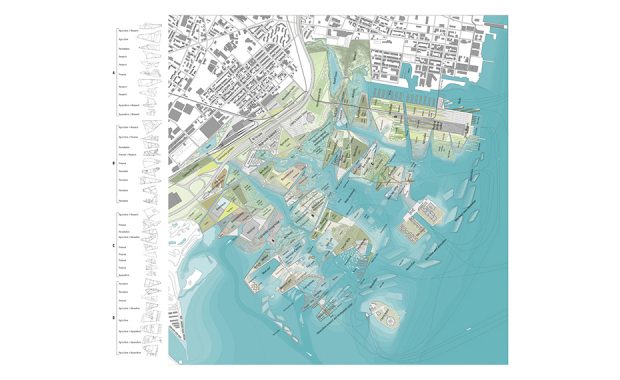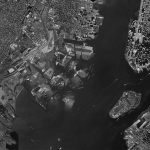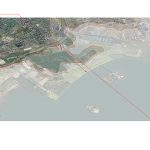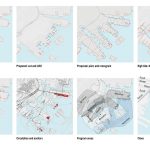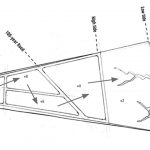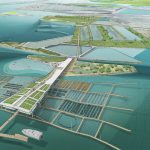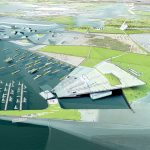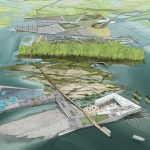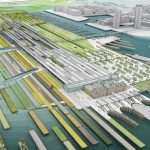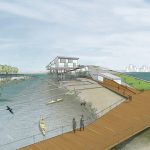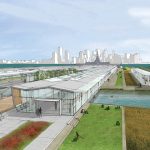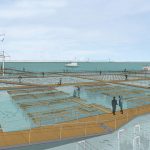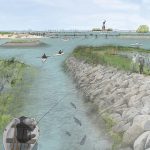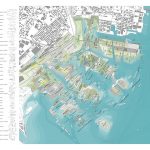Project: Water Proving Ground
Location: New York, New York
Firm: LTL Architects
Year: 2010
Competition: Rising Currents: Projects for New York’s Waterfront, MoMA
Website: http://ltlarchitects.com/water-proving-ground/
Project Description: What if the projected inundation of the urban edge by rising sea levels catalyzed a rethinking of the productive interplay between land and water? LTL addressed this question as one of five firms selected by the Museum of Modern Art to participate in the workshop and exhibition Rising Currents: Projects for New York’s Waterfront. The show examined the anticipated impact of global warming and the rising sea level on New York Harbor through a series of speculative design proposals for five sites on the water’s edge. LTL was charged with the zone located in the northwest quadrant of the harbor, including Liberty State Park and New York City’s iconic Liberty and Ellis Islands.
Created between 1880 and 1920 by extensive landfill operations associated with the arrival of the railroad, the site did not exist as land until the end of the nineteenth century. According to even the most conservative predictions of rising sea levels, it is currently destined to all but disappear underwater in the next fifty to seventy-five years. In response to these dire predictions, our proposal maintains the zone’s public use by allowing for selective infiltration of the site by the harbor. By tactically adjusting the historic fill through subtle topographic shifts, Water Proving Ground envisions a vibrant new amphibious landscape continually activated by rising tides.
Traditional defensive approaches, such as high sea walls, attempt to minimize the water’s edge. However, LTL’s design multiplies the length of the coastline by a factor of ten, to forty-four miles, sculpting the site into a series of four raised landscape piers, each crenellated to generate a sawtooth interlocking of land and water. While it renders the site a more resilient buffer to storm surge and flood events, the project also maximizes the intertidal zone’s capacity to serve as a testing ground for new uses and inhabitations based on the dynamic exchange between sea and land. Employing a wide range of boundary types, from hard-edge separations that isolate remediation zones to gradual sloping fields of estuarial interchange, the design actively engages tidal fluctuations, integrating water as a performative element rather than exclusively as a picturesque feature.
Structured as a series of petri dishes, the plan incorporates a diversity of programs and multiple ecologies—from experimental agriculture to aquatic recreation, from tidal flats to constructed wetlands—to combine productive landscape and urban park. Further drawing public activity into the site, each of the four land piers terminates in a programmatic anchor: an aquaculture research and development center, an amphitheater and tidal park, a water lodge, and a regional produce market. Enhanced systems of aquatic- and land-based transportation link the site to both the surrounding urban context and the harbor itself, reestablishing it as a vital point of exchange within the region. In testing the opportunistic and productive exchanges created by water levels linked to global climate change, the project explores modes of coastal occupation that will become pertinent for millions of the world’s citizens in the not-so-distant future.
Petri dishes are isolated environments for culturing cells to facilitate tests and studies. Premised on the maximization of biodiversity, Water Proving Ground adopts the logic of the petri dish to accommodate a multiplicity of landscapes, habitats, and programs that juxtapose natural and artificial, productive and recreational, land- and water-based uses. These wedge-shaped zones comprise distinct areas, ranging in their degree of containment from the highly compartmentalized (in, for example, bioremediation areas) to the very permeable (aquaculture zones). Within each wedge, the terrain slopes from higher to lower, harnessing the dynamics of water flow and tidal change.
Project Credits
Project team: Paul Lewis, Marc Tsurumaki, David J. Lewis; Aaron Forrest, Megan Griscom, Perla Dís Kristindóttir, Yasmin Vobis; Laura Cheung, John Morrison, Hye-Young Chung, Deric Mizokami, Cody Fithian, Mia Lorenzetti Lee, Jason Dannenbring, Clark Manning, Luke Smith, Yu-Cheng Koh, Amanda Kronk, Paul Landon, Phillip Chang, project assistants
Curator: Barry Bergdoll, Philip Johnson Chief Curator of Architecture and Design
| previous project |
